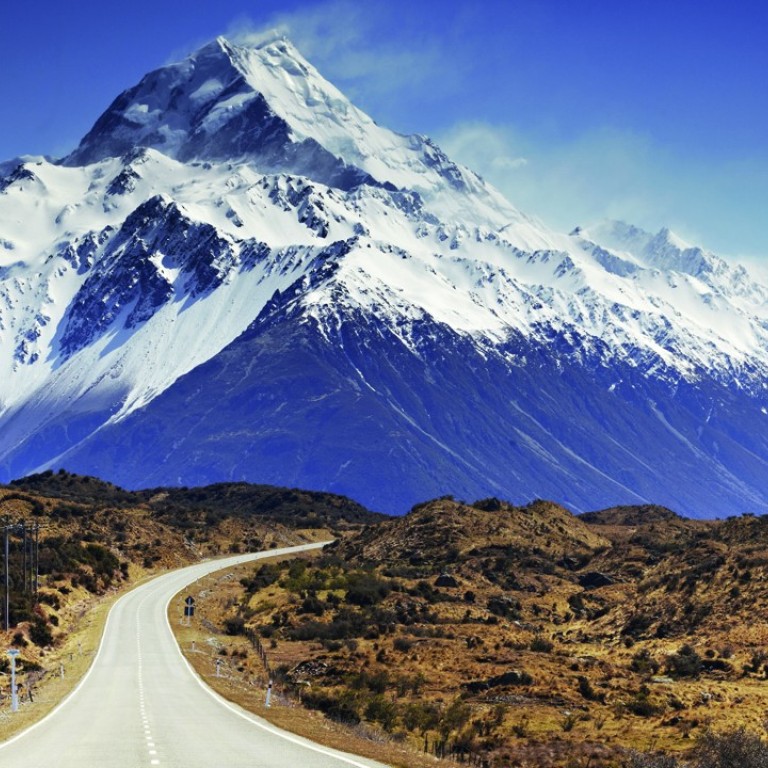
Review | Book review: Lonely Planet’s Epic Drives of the World will inspire motorists with its spectacular road trips and beautiful photography
Featuring 50 core journeys and another 150 suggested similar trips, Epic Drives will have any car owner itching to get behind the wheel – just don’t expect too much in the way of practical advice
Lonely Planet
4 stars
Cruising in the slipstream of Lonely Planet’s Epic Bike Rides of the World, released in September last year, comes Epic Drives of the World. This, though, is absolutely not the style of guidebook to chuck into the backpack, being chunky, close to 3cm thick, in hard back and heavy.

This is more of the type of tome for the coffee table, or the dentist’s waiting room, or the passenger seat of a 1972 Mercedes-Benz 350SL Cabriolet parked on the Boulevard de la Croisette in Cannes. It’s significantly more inspirational than practical.
Book review: Lonely Planet’s new guide to volunteering – for people who see travel as more than a selfie opportunity
Depending on how you look at it, Epic Drives showcases either 50 or 200 of the most spectacular and rewarding road trips on the planet.
Essentially, the book is divided into five chapters, each pertaining to a global region: Africa and the Middle East, the Americas, Asia, Europe, and Oceania. The historically automobile-friendly Americas get the most coverage, with 17 of the core 50 road trips, while Asia makes do with the least – just five. Journeys range from truly epic, bucket-list adventures to lazy Sunday afternoon spins. Distances vary from less than 40km to almost 4,000.

All the classics excursions are there, including Australia’s Great Ocean Road that meanders for 243km between the Victorian cities of Torquay and Allansford along the country’s south-eastern coast.
Built by soldiers between 1919 and 1932 and dedicated to those who died during the second world war, this highway is the world’s largest war memorial, but it’s the geography along the way that most obviously impresses. The road winds through beach towns and national parks, and passes the limestone formations celebrated as the Twelve Apostles which serve as popular tourist attractions. The version of this classic Australian road trip detailed in Epic Drives is a 550km loop.

Then, naturally, there’s Route 66 in the United States. Much of the original road is, unfortunately, long gone, so any trip hops between historical, scenic, Americana-packed locations and modern, disappointingly bland concrete ugliness. The book, however, describes the legendary highway that connects Chicago with Los Angeles as packed with “so many attractions – monumental and kitschy, natural and plastic”. The route passes through the open-skied states of Illinois, Missouri, Oklahoma, Texas, New Mexico and Arizona before wrapping up in California and at the Pacific Ocean.

Most of the other core routes highlighted in Epic Drives are anything but international household names. In Africa and the Middle East, such jaunts include Crossing the Kalahari (Botswana), the Panorama Route (South Africa) and Marrakesh to Taroudannt (Morocco), while others in the Americas include the Highway to Hana in Hawaii (US), the Salar de Uyuni (Bolivia), Crossing the Carretera Austral (Chile) and Canada’s Icefields.

In Asia, important drives include On the Trail of Ho Chi Minh (Vietnam), Crossing the Kathmandu Loop (Nepal) and South Korea: From Top to Toe. Essential trips in Europe include the Black Forest High Road (Germany), the Wilds of Abruzzo (Italy) and the Magic Circle (Iceland). As well as the Great Ocean Road, Oceania offers the Southern Alps Explorer (New Zealand) and the Captain Cook Highway (Australia), among others.

Each of the core 50 road trips are described over four pages, with a first-hand account of the journey, large colour photographs and a simple illustrative map (about as much practical use as the stars on a cloudy day). There’s a slapdash smattering of factual information – when to go, how to get there, where to stay, what to eat – that’s also of little genuine advantage.

This lack of practical advice becomes even more apparent when the 50 outings are extended to the full 200. After each of the core drives comes a single “More like this” page. If you enjoyed reading about a certain drive, then you can learn of three others in a similar vein.

In the case of The Great Ocean Road, for instance, the account is followed up by suggestions for city-to-city drives: Melbourne to Sydney (Australia), Denver to San Francisco (US) and Malaga to Seville (Spain). In Asia, On the Trail of Ho Chi Minh is followed by “revolutionary rides”: Che Guevara in Argentina, Lee against Grant (US), and Dili to Balibo (East Timor).

Each of these additional routes is covered in less than 200 words, and so – again – practical detail is lacking. That, however, is to miss the point of Epic Drives. This is a book to inspire the motorist to leap behind the wheel and hit the open road; it’s not about getting bogged down in the nitty-gritty and what might go wrong.
To Oldly Go: Tales of Intrepid Travel by the Over-60s is an inspiration for senior citizens
This philosophy is perhaps most apparent in the postcard-perfect photography throughout. It never rains in this version of the Lonely Planet, the sun always shines, snow is pretty rather than a pain, and trees are either lush and emerald green or the photogenic russet and gold hues of New Hampshire.

One other small gripe: the text is annoyingly small and, even when wearing reading glasses, the reader might struggle in low light. But then, perhaps that’s a test – like checking whether someone can read a licence plate at 20 metres.
